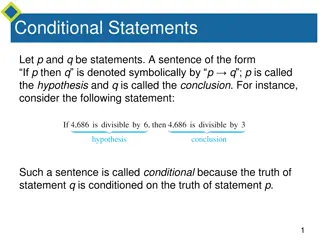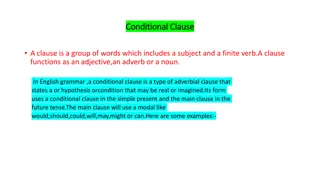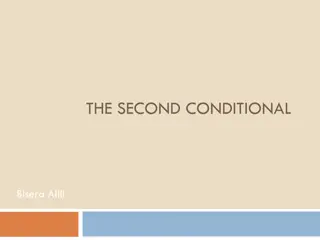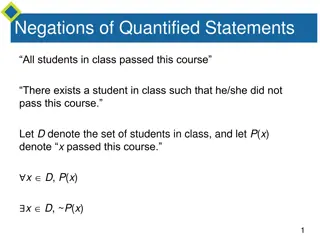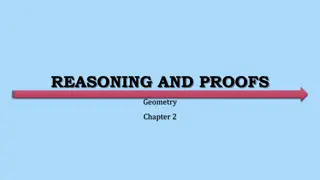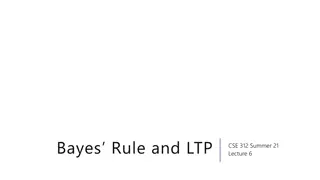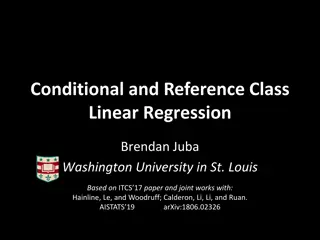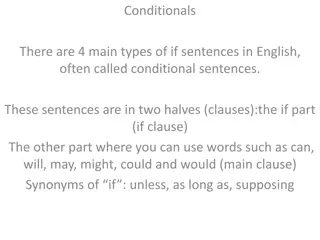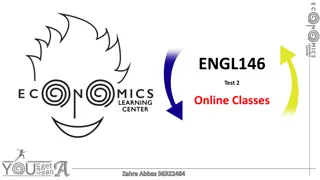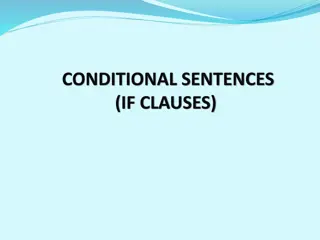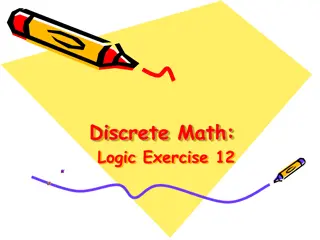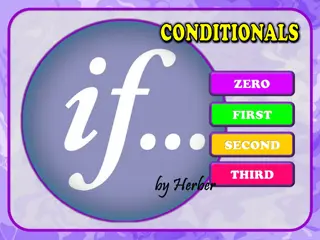Understanding Dispositions: The Conditional Analysis Approach
Explore the concept of dispositions, also known as capacities or causal powers, and the traditional Conditional Analysis (CA) approach as a dominant account of dispositions. Learn about the features and examples of dispositions such as fragility, solubility, mass, and charge, and how objects exhibit specific causal interactions based on stimuli and manifestations.
Download Presentation

Please find below an Image/Link to download the presentation.
The content on the website is provided AS IS for your information and personal use only. It may not be sold, licensed, or shared on other websites without obtaining consent from the author. Download presentation by click this link. If you encounter any issues during the download, it is possible that the publisher has removed the file from their server.
E N D
Presentation Transcript
Modelling Dispositions Alex Carruth Durham Emergence Project Durham University
Dispositions (or Capacities, Tendencies, Causal Powers )
Dispositions (or Capacities, Tendencies, Causal Powers ) The features/properties in virtue of which things engage in particular causal interactions
Dispositions (or Capacities, Tendencies, Causal Powers ) The features/properties in virtue of which things engage in particular causal interactions Canonical examples: Fragility, Solubility
Dispositions (or Capacities, Tendencies, Causal Powers ) The features/properties in virtue of which things engage in particular causal interactions Canonical examples: Fragility, Solubility But also: Mass, Charge
The Conditional Analysis (CA) Traditionally dominant account of dispositions
The Conditional Analysis (CA) Traditionally dominant account of dispositions An object O has a disposition D just in case: If S occurs then O will M where 'S' is some 'stimulus' and 'M' some 'manifestation
The Conditional Analysis (CA) Traditionally dominant account of dispositions An object O has a disposition D just in case: If S occurs then O will M where 'S' is some 'stimulus' and 'M' some 'manifestation E.g. If the vase is struck, then it will break
The Conditional Analysis (CA) Traditionally dominant account of dispositions An object O has a disposition D just in case: If S occurs then O will M where 'S' is some 'stimulus' and 'M' some 'manifestation E.g. If the vase is struck, then it will break Relationally capture a disposition s nature: D(s,m)
Single- vs. Multi-track Dispositions Debate over the number and variety of manifestations associated with a single disposition
Single- vs. Multi-track Dispositions Debate over the number and variety of manifestations associated with a single disposition Quantitative multi-tracking vs. Qualitative multi-tracking
Single- vs. Multi-track Dispositions Debate over the number and variety of manifestations associated with a single disposition Quantitative multi-tracking vs. Qualitative multi-tracking If multi-tracking is right, the simple way that the CA models dispositions cannot be correct
Single- vs. Multi-track Dispositions Debate over the number and variety of manifestations associated with a single disposition Quantitative multi-tracking vs. Qualitative multi-tracking If multi-tracking is right, the simple way that the CA models dispositions cannot be correct Going to be more complex
How dispositions operate CA assumes a stimulus based account of how dispositions operate
How dispositions operate CA assumes a stimulus based account of how dispositions operate Alternative account: mutual manifestation Dispositions work together No distinction possible between the active disposition and the mere stimulus
How dispositions operate CA assumes a stimulus based account of how dispositions operate Alternative account: mutual manifestation Dispositions work together No distinction possible between the active disposition and the mere stimulus Non-reductive, unlike CA
How dispositions operate CA assumes a stimulus based account of how dispositions operate Alternative account: mutual manifestation Dispositions work together No distinction possible between the active disposition and the mere stimulus Non-reductive, unlike CA Possibly holistic
Four accounts of dispositions Single-track, stimulus-manifestation (the CA) D(s,m)
Four accounts of dispositions Single-track, stimulus-manifestation (the CA) D(s,m) Multi-track, stimulus-manifestation D{(s1,m1), (s2,m2), ,(sn,mn)}
Four accounts of dispositions Single-track, stimulus-manifestation (the CA) D(s,m) Multi-track, stimulus-manifestation D{(s1,m1), (s2,m2), ,(sn,mn)} Single-track, mutual-manifestation D1(D2,m1)
Four accounts of dispositions Single-track, stimulus-manifestation (the CA) D(s,m) Multi-track, stimulus-manifestation D{(s1,m1), (s2,m2), ,(sn,mn)} Single-track, mutual-manifestation D1(D2,m1) Multi-track, mutual-manifestation D1{(D2,m1),(D3,m2),...,(Dn,mn)}
How to react? Monism? if so, which account?
How to react? Monism? if so, which account? Pluralism? greater cost/complexity?
How to react? Monism? if so, which account? Pluralism? greater cost/complexity? Pragmatism? different responses for different tasks/contexts



